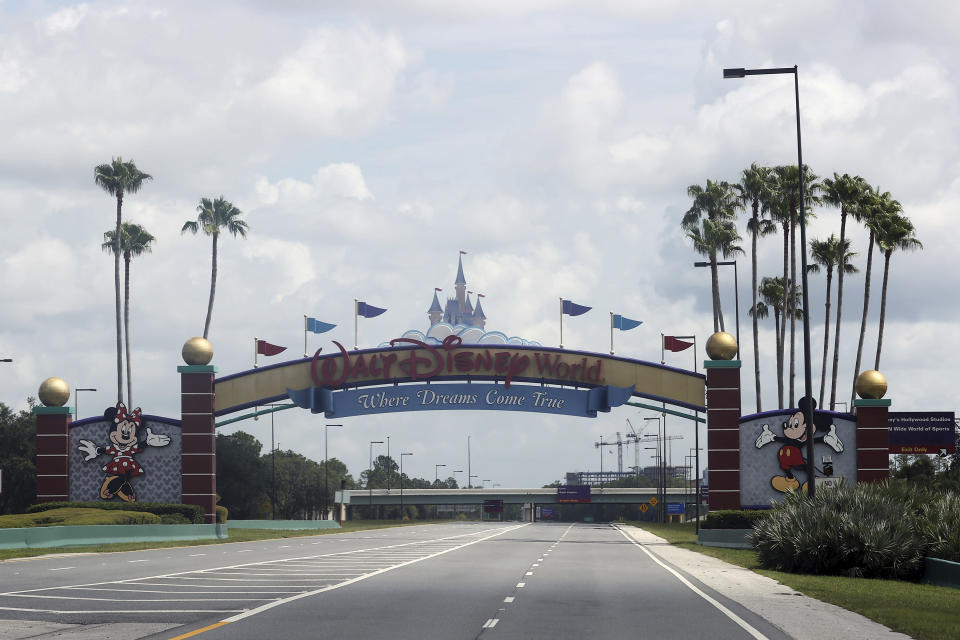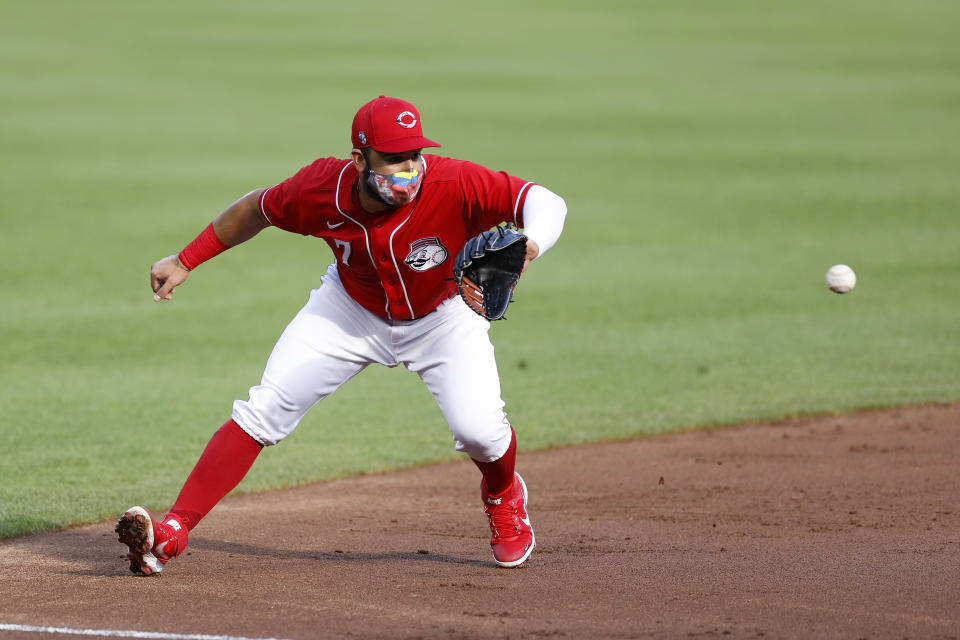Which sports will make it through COVID-19 in 2020? Ranking them most to least likely
North America’s five most popular team sports — the NFL, NBA, NHL, MLB and college football — are approaching their return. Some sooner than others, of course — baseball will start on Thursday, while the NFL isn’t slated to go until Sept. 10.
Sports can exist during a pandemic. The UFC, PGA Tour and NASCAR are all barreling along with only minimal bumps (albeit thanks to tremendous effort and expense ). Major League Soccer and the National Women’s Soccer League have both survived early struggles to settle in. We’ve seen everything from soccer in Europe to baseball in Asia work well.
What about with the big five though? Everyone is determined to give this a try, but the nature of each sport means that the challenges, and possibilities, vary wildly. What will work for one might be impossible for another.
Here are the predictions, from most likely to succeed to least likely, for the five sports. This is more about logistics — can a season be finished, not just started — than health risks, and so on. These sports are businesses, big ones. This is a business assessment.

1. NBA
Number of teams: 22
Start date: July 30
Latest possible end date: Oct. 13 (76 days)
The NBA will spend at least $170 million on its bubble at Disney World in Orlando. The protocols are stringent and seemingly nothing has been left to chance (there is even a "snitch line"). Already there has been success — one week in and there were zero positive tests among the players. The guys will be breathing all over each other during games, but if there is no virus inside the bubble, then it shouldn’t matter.
So, if the bubble holds, then this is going to work. It helps that the 22 teams feature meager 30-person traveling parties (players, coaches, trainers, doctors, executives). That’s just 660 people — there are additional league employees, media and support staff, of course.
Even better, the bubble will get continuously smaller as this goes on because teams will be eliminated and sent home. By late August, as the conference semifinals are set to begin, there will be just eight remaining teams (about one third of the start). By mid-September it will be four and late September it will be down to two. If the NBA can get through the first month, it might be in great shape.
The challenge is maintaining vigilance, which requires motivation. The closer a team gets to possibly winning a championship, presumably the motivation increases.
It won’t be easy, but if anyone can do this, it’s the NBA.
2. NHL
Teams: 24
Start date: July 28 (exhibition games)
Latest possible end date: Oct. 4 (69 days)
The NHL has constructed two bubbles — one in Toronto and one in Edmonton. The entire operation will move to Edmonton for the conference finals in September. While teams haven’t entered yet and we don’t know all the particulars, the rules are slated to be similar to the NBA’s.
As an added bonus, both bubbles are in Canada, where the coronavirus is far less prevalent. For example, while greater Edmonton is home to about 1.3 million people, there are just 233 current active cases and just 29 hospitalizations. Also good, the number of teams competing drops even quicker than the NBA — by August 9, less than two weeks in, the league will be down to just 16 teams.
The negatives? The rosters (31 players) and the traveling parties (52 people) are bigger than the NBA’s, which is why hockey is ranked slightly behind basketball here.
Also, it's impossible to social distance in hockey — even on the bench players need to crowd together because they enter the game on the fly. It’s high contact and exhausting; everyone is breathing heavily. There is also a specialized position — goaltender. If a goalie, or two or three of them, catch the virus and have to quarantine, a team is in huge competitive trouble.
That said, this will be about the strength of the bubble. Considering the limited risk in Canada, the chances of the NHL making it seem pretty high.

3. MLB
Teams: 30
Start date: July 23
Latest possible end date: “Likely” before Nov. 1 (101 days)
We now enter the “we’re trying to operate within a pandemic” stage of the list. There will be no bubble for baseball — it was seemingly impossible. A proposal to try it in Phoenix, where so many spring training facilities exist, went nowhere.
Teams will play at their home stadiums (except for Toronto, which has been barred by the Canadian government from trying). They’ll travel. They’ll sleep at home. They’ll be around their families. They’ll just exist.
Obviously teams will have rules and standards, but for the purposes of having a season, inside a bubble is better than outside a bubble. The likelihood that a team can make it through the 60-game season without a player testing positive is unlikely. Baseball will just have to deal with it and hope that there aren’t widespread outbreaks that could sideline significant portions of a roster (causing forfeits) or zero in on the pitching staff all at once.
As for the game, it’s pretty easy to social distance. Dugouts now feature players spread out under tents in the stands. During exhibition games, some players have even worn masks while playing. All of that is a good thing.
The concerns are roster sizes, number of teams, no paring down of teams until the end of September, life out in the wild and the need for pitchers to be healthy in a sport where games happen every day. If you miss two weeks in football, you miss two games. In baseball, you could miss almost a quarter of the season.
Making it is certainly possible. It’s going to be bumpy though.
4. The NFL
Teams: 32
Start date: Sept. 10 (not counting six weeks of training camp)
Latest possible end date: Feb. 7 (150 days)
This is a massive undertaking. Training camp rosters will have 80 players, which means 2,500-plus players league wide at the start. Coaching staffs are huge. Support staffs even bigger. So much of football is about meetings, training and medical. The Super Bowl is nearly six months away, almost half of which will take place after Thanksgiving when experts predict the coronavirus will mimic the flu and become more prevalent.
This is going to be a matter of “where there is a will, there will be a way.” If the NFL is going to make it, it will have to just power through. Players are going to get the virus and it will probably spread across teams. Some games may become a farce — a number of starters, including the star quarterback, get sidelined, for example.
Teams will need to just bring in more and more players off the street to fill in the gaps. Injuries have always been prevalent in football, so practice squads and midseason signings are already common. This year it will just be more common.
There are billions at stake and this is a league that likes to think blunt force can overcome nearly anything. The question: How much does the NFL want to push? It can be done, just don’t expect 2020 to look anything like a normal season.
5. College football
Teams: 130
Start date: Aug. 29 (not counting a month-plus training camp)
Latest possible end date: January 11 (136 days)
Good luck. College football is easily the most challenging sport to make work during a pandemic. There are 130 teams in the highest division. They come from 43 states — in big cities and tiny towns — and represent huge state schools, small private colleges, religious institutions and even military academies.
There is no central leadership (the NCAA has no power over this; the sport is divided into conference fiefdoms). There are dramatic budgetary differences between programs. Different states will have different rules (already the governor of New Mexico is requesting schools in her state not play). University presidents will have the final call.
Diversity and chaos are part of the beauty of college football. It’s a big challenge now, however. This is why the Big Ten and Pac-12 have already said they will attempt a conference-only schedule. Not only does this assure equal standards of testing and protocols, but it allows for nine or so games to be spread out over three months, creating control and schedule flexibility. Everyone may follow.
There are over 10,000 college football players and they will be living, studying and “socializing” with thousands and thousands of fellow college kids who aren’t known for "distancing." After practice Tom Brady might be able to drive home to his 30,000-square-foot house to be with his family. These guys will go back to dorms and apartment complexes.
How will this work? That’s what is keeping athletic directors and conference commissioners up at night. It’s very easy to say that they should play but anyone just banging the table and demanding games has no concept of what needs to happen. The devil is in the details.
How many positives should shut down a team? What if a game is postponed? How long do guys sit out? How often do we test? How much can we afford? What about contact tracing? Do you travel on game days? What about the soccer or field hockey team? What do you do with postponements? If campus gets shut down, does the season end? What about my aging head coach? Do we care about bowls and playoffs this year? Does it matter that these guys aren’t even paid?
And so on.
College football wants to try and some will likely give it go. If possible, they should. How long it lasts is anyone’s guess though.
Of all the sports, this one faces the steepest road to just starting, let alone finishing.
More from Yahoo Sports:
